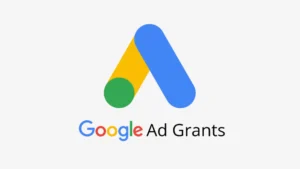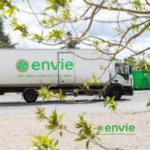
12 Myths About Google Ad Grants for Nonprofits
We know that for nonprofits, every penny counts and every opportunity to secure additional resources is valuable. Google Ad Grants Google Ad Grants is a promising program, but it often comes with many misconceptions. In this article, we share 12 myths about Google Ad Grants for Nonprofits.

Myth 1 on Google Ad Grants : It is difficult to maintain a click-through rate (CTR) above 5% and your Ad Grants account may be suspended for this reason.
Reality : Maintaining a high CTR is not only possible, but it's the norm for many organizations. In fact, most of the Google Ad Grants accounts we've observed regularly exceed 10% CTR. If your CTR is below 5%, it's a sign that your ads or keywords need optimizing, but it's certainly not an impossible task.
Practical advice:
Use keywords that are very specific to your cause to attract a relevant audience.
Write compelling, clear ads that use your keywords in the titles and descriptions, highlighting the call to action and the benefits for the user.
Google Ad Grants Myth 2: I should remove keywords below 5% CTR.
Reality : There's no need to systematically remove all keywords below 5% CTR. Instead, focus on those with low CTRs and high impressions. The 5% threshold applies to the entire account, not to each keyword individually.
Practical advice:
Evaluate your keywords periodically and remove ineffective ones.
Continuously test new keywords to find the ones that generate the most engagement.
Myth 3 on Google Ad Grants : It is mandatory to log in every 30 days and change something every 90 days.
Reality : While it is still recommended to log in regularly and optimize your campaigns, it is no longer a requirement.
Practical advice:
Schedule monthly reviews of your account to adjust your strategies.
Use analytics to make continuous improvements.
Myth 4 on Google Ad Grants : Bids are capped at 2 $, making competition difficult for most keywords.
Reality : For the past six years, bids have been freed from the 2 $ limit, provided you use a conversion-based bidding strategy like “maximize conversions.” This strategy is a requirement of the Ad Grants program, effectively eliminating any bid limits. The main challenge with Google Ad Grants is that your ads are shown in a secondary auction, meaning they only show if there are unsold ads remaining after the primary auction between paid accounts. A paid account with a bid of 0.10 $ will always pass an Ad Grants account with a bid of 10 $.
Practical advice:
Set up smart bidding strategies like maximize conversions or target CPA.
Myth 5: The average account only spends 300 $.
Fact: This figure was inaccurate from the start and has been significantly exceeded by the majority of current accounts. Your Ad Grants account is actually limited to 329 $ per day (329 $ x 30 days = 10,000 $).
Practical advice:
Monitor your budget regularly and adjust your bids to maximize the use of your monthly 10,000 $ grant. Make sure you spend all 329 $ per day, including weekends.
Myth 6 on Google Ad Grants : You can use an Ad Grant to get donations.
Reality : In practice, it is rare that Ad Grants ads generate donations Significant. To obtain donations, it is best to use a paid Google Ads account. Ad Grants are better suited for raising awareness, disseminating information, and building contact lists for long-term relationship strategies. This is because Google Ad Grants operates on a secondary auction and only serves if there are unsold ad spaces. However, donation queries are highly competitive, and the top 4 spots on the results page are often monopolized by paid ads.
Practical advice:
Use Ad Grants to promote educational and awareness content.
Include visitors in email campaigns to build relationships and potentially generate donations.
Myth 7 on Google Ad Grants : You need to add a lot of keywords to spend the budget.
Reality : Adding too many keywords can negatively impact the quality of your ads and complicate your account management. A well-optimized campaign may only use a few dozen effective keywords.
Practical advice:
Start with 10-15 keywords per ad group and adjust based on performance.
Focus on keywords that drive relevant conversions and clicks.
Myth 8 on Google Ad Grants : Clicks are the end goal.
Reality : The main goal isn't simply to get clicks, but to generate meaningful conversions. Conversions are concrete actions taken by visitors that directly contribute to your association's goals.
Practical advice:
Clearly define what you consider a conversion (newsletter signup, document download, etc.).
Use conversion tracking to evaluate the effectiveness of your ads and adjust your strategies.
Myth 9 on Google Ad Grants : Suspensions are scary and you lose count.
Reality : Ad Grants account suspensions are rare and usually temporary. Once you correct the issues, your account will be reinstated.
Practical advice:
Make sure you follow Google Ads policies to avoid suspensions.
If your account is suspended, follow the instructions provided to quickly restore it.
Myth 10 on Google Ad Grants : You cannot target built-in or custom audiences.
Reality : Unlike before, it is now possible to target integrated and personalized audiences. This feature, which had been unavailable for some time, has been fixed and is now working properly. However, display remarketing remains impossible.
Practical advice:
Use audience targeting to refine your campaigns and reach specific segments of your audience.
Myth 11 on Google Ad Grants : Ad groups require two or more ads.
Reality : This is no longer necessary. A single RSA (Responsive Search Ad) ad is sufficient. However, it's understandable that some people still get confused, as Google's official guide still mentions the old rule.
Practical advice:
Create an RSA ad for each ad group and test different variations to optimize performance.
Myth 12 on Google Ad Grants : The Ad Grants account must be managed manually to be effective.
Reality : Manual management isn't the only effective way to manage an Ad Grants account. By using automation tools and automated management strategies, you can maintain a successful account without spending too much time on it.
Practical advice:
- Use Google Ads automation tools, such as automated bidding strategies and responsive ads, to optimize your campaigns effectively.
- Schedule regular reviews to adjust your settings based on performance.
Conclusion
By debunking these 12 myths about Google Ad Grants, you can get the most out of your Google Ad Grants account and maximize the impact of your advertising campaignsThe key to success lies in continuous optimization, monitoring performance and adjusting your strategies based on real data.



